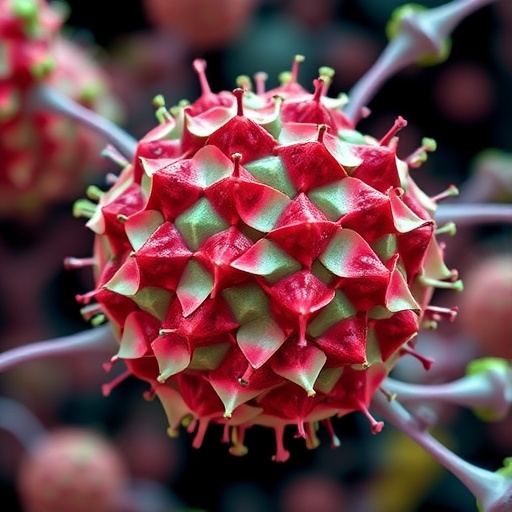At the microscopic scale of biology, the smallest components often exert the most profound influences. Human cells, measuring approximately ten micrometers across, host an intricate network of biochemical processes that dictate life at the cellular level. Among the most critical yet underappreciated factors shaping these processes is the concentration of protons, or pH, within cells. Slight fluctuations in pH can dramatically alter cellular functions such as movement, division, and signal transduction. These pH changes are not merely biochemical trivia; they have been implicated as accelerants in the progression of severe illnesses including cancer, Alzheimer’s disease, and Huntington’s disease.
Understanding how protein structures respond dynamically to pH changes has remained a challenging frontier in cell biology. Proteins, the molecular workhorses of cells, often undergo conformational shifts that modulate their activity in response to the acidic or basic environment. Discerning which proteins are sensitive to these pH variations is paramount, as it may unlock new pathways for therapeutic intervention. Currently, experimental approaches to identify pH-sensitive proteins are labor-intensive and time-consuming, often requiring painstaking analyses of individual proteins in isolation.
In a groundbreaking advancement, researchers at the University of Notre Dame have introduced a powerful computational pipeline capable of scanning hundreds of proteins within days, rather than years. This novel method accelerates the identification of pH-sensitive domains within proteins, revolutionizing the initial screening phase of biomolecular research. By leveraging existing structural data and experimental insights, the team created an algorithmic process that predicts specific residues within proteins that could mediate pH-dependent allosteric regulation.
Dr. Katharine White, Clare Boothe Luce Assistant Professor in the Department of Chemistry and Biochemistry at Notre Dame, emphasized the transformative nature of this technology. “Prior to this development, scientists were searching for a needle in a haystack when identifying pH-responsive proteins,” she remarked. The computational pipeline effectively refines that haystack into a manageable collection of candidate proteins, setting the stage for focused experimentation and drug design.
Historically, only a handful of cytoplasmic proteins — approximately seventy — have been validated as pH-sensitive via experimental studies despite the hypothesis that many more possess this characteristic. Moreover, detailed mechanistic insights exist for fewer than a third of these known proteins. The challenge stems from the complexity of measuring pH-dependent conformational changes, which often involve subtle shifts in ionizable amino acid networks that are difficult to capture through traditional experimental modalities.
The new study, recently published in the journal Science Signaling, represents an important leap forward. With funding support from the National Science Foundation and the National Institutes of Health, White and her team formed a modular pipeline adept at integrating conformational data from protein crystal structures, pKa predictions of ionizable groups, and bioinformatic annotations. The pipeline can systematically identify so-called “ionizable networks,” clusters of amino acids whose protonation states modulate protein structure and function in response to pH changes.
A particularly salient application of this method was the analysis of the Src homology 2 (SH2) domain, a conserved protein module central to signal transduction pathways regulating cell growth, differentiation, and immune responses. The SH2 domain is recurrently mutated in various cancers, making it a prime target for understanding pH-mediated regulatory mechanisms. White’s team experimentally validated the in silico prediction that the SH2 domain exhibits marked pH sensitivity, confirming both its biological relevance and the accuracy of the computational model.
Further insights emerged concerning c-Src, a non-receptor tyrosine kinase with pivotal roles in oncogenic signaling. The study elucidated the precise molecular locale where pH influences c-Src activity, underscoring how acid-base chemistry interfaces with protein allosteric regulation. Such mechanistic clarity holds promise for the development of precision therapeutics that exploit the protonation states of key residues to modulate enzyme function selectively.
Papa Kobina Van Dyck, lead author and recent doctoral graduate in biophysics at Notre Dame, reflected on the magnitude of the achievement: “We condensed what would have taken decades of biochemical experimentation into a matter of weeks using computational methods.” This acceleration dramatically enhances the pace at which research can move from hypothesis to experimental validation and, eventually, clinical application.
Beyond cancer and neurodegeneration, the implications of mapping pH-sensitive protein networks extend to a broad spectrum of medical conditions characterized by dysregulated pH dynamics, including diabetes, autoimmune diseases, and traumatic brain injury. The Notre Dame pipeline therefore represents a versatile tool not only for fundamental biological discovery but also for translational efforts aimed at drug discovery and personalized medicine.
In summary, this pioneering work exemplifies how integrative computational biology can circumvent traditional experimental bottlenecks, offering new vistas for exploring the complex molecular choreography dictated by pH fluctuations in cells. By illuminating the ionizable networks that govern protein allostery, the study provides a foundation for innovative therapies targeting diseases that span oncology, neurology, and beyond.
For readers seeking to delve deeper into this transformative research, the full article titled “Ionizable networks mediate pH-dependent allostery in the SH2 domain–containing signaling proteins SHP2 and SRC” is accessible through Science Signaling. The comprehensive study meticulously outlines the computational methodologies and experimental validations that underpin this advancement, heralding a new era in cellular physiology and disease biology.
Subject of Research: pH-dependent regulation of protein structure and function in cellular signaling pathways.
Article Title: Ionizable networks mediate pH-dependent allostery in the SH2 domain–containing signaling proteins SHP2 and SRC
News Publication Date: 11-Nov-2025
Web References:
Original article: https://www.science.org/doi/10.1126/scisignal.adt3018
University of Notre Dame overview: https://research.nd.edu/news-and-events/news/new-computational-process-could-help-condense-decades-of-disease-biology-research-into-days/
Image Credits: Photo by Peter Ringenberg/University of Notre Dame
Keywords: Cellular processes, Life sciences, Diseases and disorders, Breast cancer, Signaling pathways
Tags: accelerated disease research techniquesadvancements in disease biologybiochemical processes in human cellscancer and Alzheimer’s disease studiescellular pH impact on healthcomputational biology methodshigh-throughput protein analysis techniquesNotre Dame research innovationspH-sensitive proteins researchprotein activity modulationprotein structure dynamicstherapeutic interventions in cell biology





